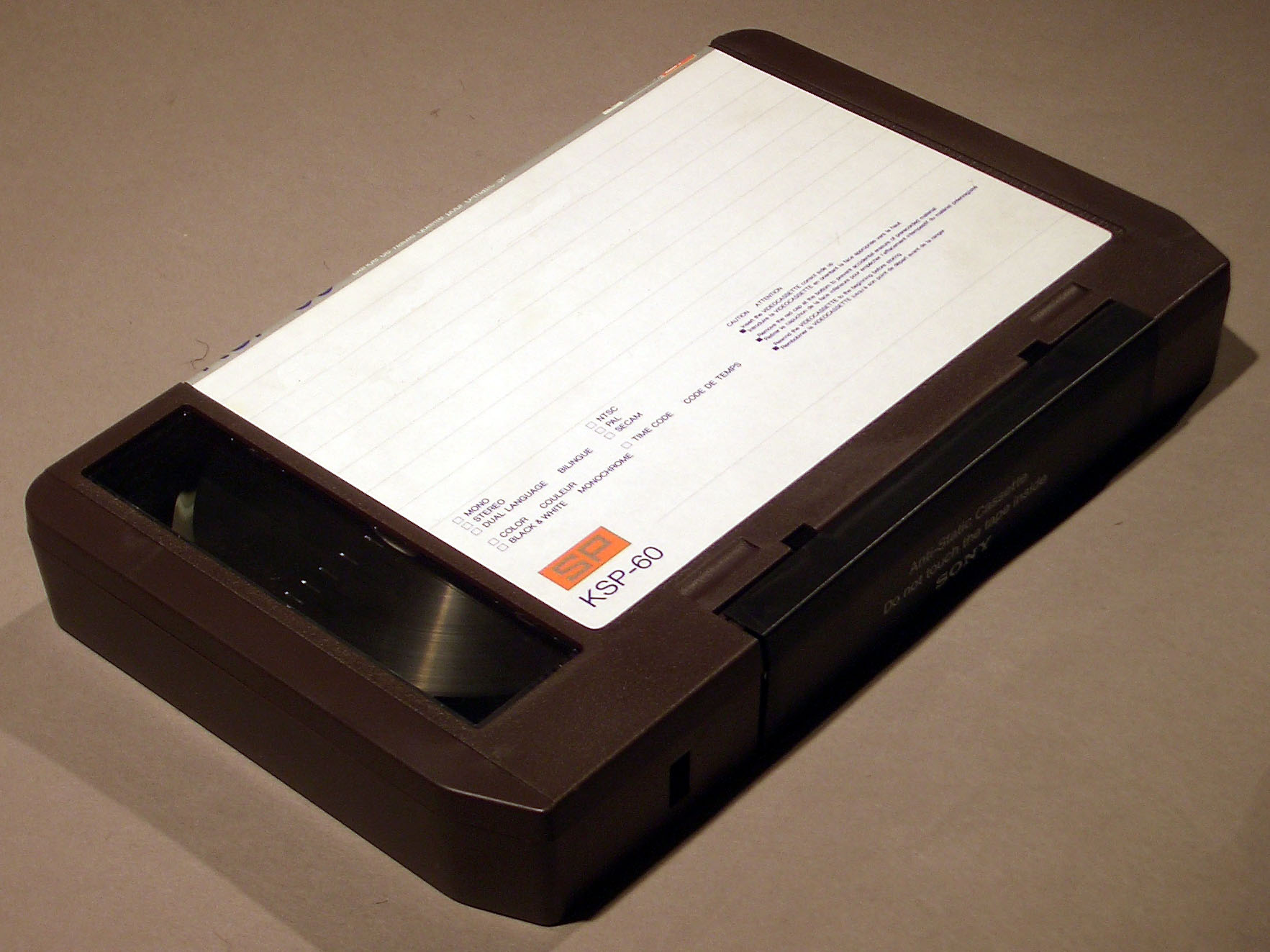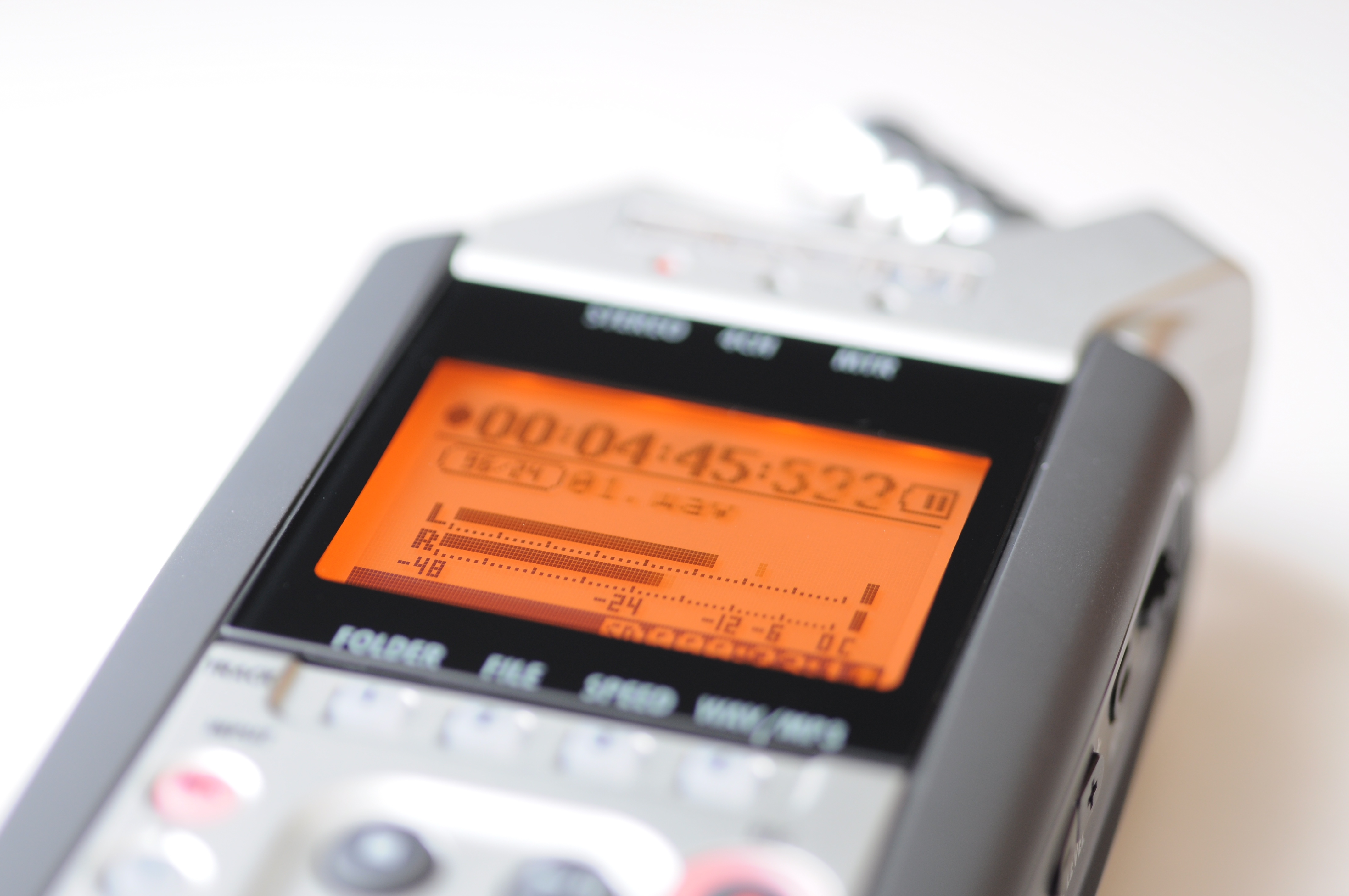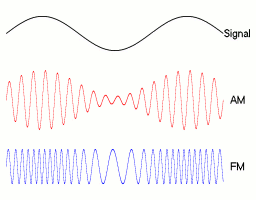|
44,100 Hz
In digital audio, 44,100 Hz (alternately represented as 44.1 kHz) is a common sampling frequency. Analog audio is often recorded by sampling it 44,100 times per second, and then these samples are used to reconstruct the audio signal when playing it back. The 44.1 kHz audio sampling rate is widely used due to the compact disc (CD) format, dating back to its use by Sony from 1979. History The 44.1 kHz sampling rate originated in the late 1970s with PCM adaptors, which recorded digital audio on video cassettes,Specifically U-matic cassettes notably the Sony PCM-1600 introduced in 1979 and carried forward in subsequent models in this series. This then became the basis for Compact Disc Digital Audio (CD-DA), defined in the Red Book standard in 1980. Its use has continued as an option in 1990s standards such as the DVD, and in 2000s, standards such as HDMI. This sampling frequency is commonly used for MP3 and other consumer audio file formats which were ori ... [...More Info...] [...Related Items...] OR: [Wikipedia] [Google] [Baidu] |
Digital Audio
Digital audio is a representation of sound recorded in, or converted into, digital form. In digital audio, the sound wave of the audio signal is typically encoded as numerical samples in a continuous sequence. For example, in CD audio, samples are taken 44,100 times per second, each with 16-bit sample depth. Digital audio is also the name for the entire technology of sound recording and reproduction using audio signals that have been encoded in digital form. Following significant advances in digital audio technology during the 1970s and 1980s, it gradually replaced analog audio technology in many areas of audio engineering, record production and telecommunications in the 1990s and 2000s In a digital audio system, an analog electrical signal representing the sound is converted with an analog-to-digital converter (ADC) into a digital signal, typically using pulse-code modulation (PCM). This digital signal can then be recorded, edited, modified, and copied using compu ... [...More Info...] [...Related Items...] OR: [Wikipedia] [Google] [Baidu] |
De Facto
''De facto'' ( ; , "in fact") describes practices that exist in reality, whether or not they are officially recognized by laws or other formal norms. It is commonly used to refer to what happens in practice, in contrast with '' de jure'' ("by law"), which refers to things that happen according to official law, regardless of whether the practice exists in reality. History In jurisprudence, it mainly means "practiced, but not necessarily defined by law" or "practiced or is valid, but not officially established". Basically, this expression is opposed to the concept of "de jure" (which means "as defined by law") when it comes to law, management or technology (such as standards) in the case of creation, development or application of "without" or "against" instructions, but in accordance with "with practice". When legal situations are discussed, "de jure" means "expressed by law", while "de facto" means action or what is practiced. Similar expressions: "essentially", "unofficial", " ... [...More Info...] [...Related Items...] OR: [Wikipedia] [Google] [Baidu] |
EIAJ
Founded in 1948, the Electronic Industries Association of Japan (EIAJ) was one of two Japanese electronics trade organizations that were merged into the Japan Electronics and Information Technology Industries Association (JEITA). Prior to the merger, EIAJ created a number of electronics industry standards that have had some use outside Japan, including: *The EIAJ connectors used for DC power (EIAJ RC-5320A, EIAJ RC-5321, and EIAJ RC-5322 *The D-Terminal connector (RC-5237), used instead of three RCA plugs for component video connections. *The TOSLINK (EIAJ Optical, RC-5720C) optical S/PDIF audio connector. *The EIAJ-1 videotape format, the first standardized format for industrial/non-broadcast video tape recording, released in 1969. Another standard is the multi-channel TV sound system used with the NTSC-J analog TV system. It is often referred to simply as EIAJ, or sometimes as FM-FM audio. Transistor nomenclature The Japanese technical standard JIS-C-7102 provides a meth ... [...More Info...] [...Related Items...] OR: [Wikipedia] [Google] [Baidu] |
FM Stereo
FM broadcasting is a method of radio broadcasting using frequency modulation (FM). Invented in 1933 by American engineer Edwin Armstrong, wide-band FM is used worldwide to provide high fidelity sound over broadcast radio. FM broadcasting is capable of higher fidelity—that is, more accurate reproduction of the original program sound—than other broadcasting technologies, such as AM broadcasting. It is also less susceptible to common forms of interference, reducing static and popping sounds often heard on AM. Therefore, FM is used for most broadcasts of music or general audio (in the audio spectrum). FM radio stations use the very high frequency range of radio frequencies. Broadcast bands Throughout the world, the FM broadcast band falls within the VHF part of the radio spectrum. Usually 87.5 to 108.0 MHz is used, or some portion thereof, with few exceptions: * In the former Soviet republics, and some former Eastern Bloc countries, the older 65.8–74 MHz band ... [...More Info...] [...Related Items...] OR: [Wikipedia] [Google] [Baidu] |
Soundstream
Soundstream Inc. was the first United States audiophile digital audio recording company, providing commercial services for recording and computer-based editing.Robert Easton, ''Soundstream, the first Digital Studio'', Recording Engineer/Producer, April 1976 Company Soundstream was founded in 1975 in Salt Lake City, Utah by Dr. Thomas G. Stockham, Jr. The company provided worldwide on-location recording services to Telarc, Delos, RCA, Philips, Vanguard, Varèse Sarabande, Angel, Warner Brothers, CBS, Decca, Chalfont, and other labels. They manufactured a total of 18 digital recorders, of which seven were sold and the rest leased out. Although most recordings were of classical music, the range included country, rock, jazz, pop, and avant-garde. The first US live digital recording was made in 1976 by Soundstream's prototype 37 kHz, 16-bit, two channel recorder. New World Records recorded the Santa Fe Opera's performance of Virgil Thomson's ''The Mother of Us All'', an ... [...More Info...] [...Related Items...] OR: [Wikipedia] [Google] [Baidu] |


